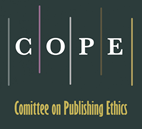Apprenticeship Model in 21st Century’s Surgical Education: Should it Perish?
DOI:
https://doi.org/10.48111/2021.03.01Keywords:
Surgical training, Apprenticeship, Medical Education, Residents, TraineesAbstract
Traditionally the Apprenticeship has remained the backbone of any surgical training model for decades. This model ensures optimal surgical training quality by ensuring optimal trainer-trainee relationship and adequate exposure to the disease and operative spectrum. In this 21st century, both the quality of meaningful trainer-trainee interaction and operative or clinical exposure has come at stake due to multiple factors. These factors include rapidly advancing technology, more residents, the evolution of subspecialties, reducing working hours, and many others, which greatly compromise the strength and quality of apprenticeship. Keeping in view the strengths and benefits, and also identifying the need in the 21st century this model needs reincarnation. Newer pursuits like Proficiency-Based Progression (PBP) through Osler and Halstedian Model, quality assured assessment, use of simulated settings, augmented reality, and robotics are few choices. A carefully planned incorporation of strategies into these newer learning models is pivotal to maintain the essence of apprenticeship for not only keeping this model alive but also ensuring the quality of meaningful trainer-trainee interaction and adequate clinical exposure in surgical training.
References
Petrowsky H, Demartines N, Rousson V, et al. Evidence-based value of prophylactic drainage in gastrointestinal surgery: A systematic review and meta-analyses. In: Annals of Surgery. Vol 240. ; 2004:1074-1085. doi:10.1097/01.sla.0000146149.17411.c5
Lewis RT, Goodall RG, Marien B, Park M, Lloyd-Smith W, Wiegand FM. Simple elective cholecystectomy: To drain or not. Am J Surg. 1990;159(2):241-245. doi:10.1016/S0002-9610(05)80271-5
Sun HC, Qin LX, Lu L, et al. Randomized clinical trial of the effects of abdominal drainage after elective hepatectomy using the crushing clamp method. Br J Surg. 2006;93(4):422-426. doi:10.1002/bjs.5260
L De Salvo AAFRUTFMLDS. The connection between the type of drainage and sepsis in thyroid surgery. Ann Ital Chir. 1998;69(2):165-167.
Burkey SH, van Heerden JA, Thompson GB, Grant CS, Schleck CD, Farley DR. Reexploration for symptomatic hematomas after cervical exploration. Surgery.2001;130(6):914-920. doi:10.1067/msy.2001.118384
Hoffmann J, Shokouh-Amiri MH, Damm P, Jensen R. A prospective, controlled study of prophylactic drainage after colonic anastomoses. Dis Colon Rectum. 1987;30(6):449-452. doi:10.1007/BF02556495
Woods RSR, Woods JFC, Duignan ES, Timon C. Systematic review and meta-analysis of wound drains after thyroid surgery. Br J Surg. 2014;101(5):446-456. doi:10.1002/bjs.9448
Tian J, Li L, Liu P, Wang X. Comparison of drain versus no-drain thyroidectomy: a meta-analysis. Eur Arch Oto-Rhino-Laryngology. 2017;274(1):567-577. doi:10.1007/s00405-016-4213-0
Sanabria A, Carvalho AL, Silver CE, et al. Routine drainage after thyroid surgery--a meta-analysis. J Surg Oncol. 2007;96(3):273-280. doi:10.1002/jso.20821
Suslu N, Vural S, Oncel M, et al. Is the insertion of drains after uncomplicated thyroid surgery always necessary? Surg Today. 2006;36(3):215-218. doi:10.1007/s00595-005-3129-x
Li L, Liu W, Tao H, et al. Efficacy and safety of negative pressure versus natural drainage after thyroid surgery: A systematic review and meta-analysis. Med (United States). 2018;97(31). doi:10.1097/MD.0000000000011576
O Wihlborg LBHM. To drain or not to drain in thyroid surgery. A controlled clinical study. Arch Surg. 1988;123(1):40-41.
Samraj, Kumarakrishnan Gurusamy K. Wound drains following thyroid surgery. Cochrane Database Syst Rev. 2015;(2):1-25. doi:10.1002/14651858.CD006099.pub4
Corsten M, Johnson S, Alherabi A. Is Suction Drainage an Effective Means of preventing Hematoma in Thyroid Surgery? A Meta-Analysis. J Otolaryngol. 2005;34(06):415. doi:10.2310/7070.2005.34609
Shaha AR, Jaffe BM. Selective use of drains in thyroid surgery. J Surg Oncol. 1993;52(4):241-243. doi:10.1002/jso.2930520409
Neary PM, O’Connor OJ, Shafiq A, et al. The impact of routine open nonsuction drainage on fluid accumulation after thyroid surgery: A prospective randomised clinical trial. World J Surg Oncol. 2012;10. doi:10.1186/1477-7819-10-72
Ozlem N, Ozdogan M, Gurer A, Gomceli I, Aydin R. Should the thyroid bed be drained after thyroidectomy? Langenbeck’s Arch Surg. 2006;391(3):228-230. doi:10.1007/s00423-006-0048-2
Rüetschi U, Olarte Salazar CM. An e-Delphi study generates expert consensus on the trends in future continuing medical education engagement by resident, practicing, and expert surgeons. Med Teach. 2020;42(4):444-450. doi:10.1080/0142159X.2019.1704708
O.Nyumba T, Wilson K, Derrick CJ, Mukherjee N. The use of focus group discussion methodology: Insights from two decades of application in conservation. Methods Ecol Evol. 2018;9(1):20-32. doi:10.1111/2041-210X.12860
Strauss A. Qualitative Analysis for Social Scientists.; 1987. https://books.google.com/books?hl=en&lr=&id=y16ww5ZsJ0AC&oi=fnd&pg=PA109&ots=gWbxMXn4gW&sig=aE6vWrEc8gQTyTFNyi1MWoRUQFM. Accessed June 10, 2020.
Graneheim UH, Lundman B. Qualitative content analysis in nursing research: Concepts, procedures and measures to achieve trustworthiness. Nurse Educ Today. 2004;24(2):105-112. doi:10.1016/j.nedt.2003.10.001
Portinari M, Carcoforo P. The application of drains in thyroid surgery. Gland Surg. 2017;6(5):563-573. doi:10.21037/gs.2017.07.04
Wax MK, Valiulis AP, Hurst MK. Drains in Thyroid and Parathyroid Surgery: Are They Necessary? Arch Otolaryngol Neck Surg. 1995;121(9):981-983. doi:10.1001/archotol.1995.01890090025004
Dunlap WW, Berg RL, Urquhart AC. Thyroid drains and postoperative drainage. Otolaryngol - Head Neck Surg. 2010;143(2):235-238. doi:10.1016/j.otohns.2010.04.024.
Downloads
Published
How to Cite
Issue
Section
License
Copyright (c) 2021 Saadia Shahzad, Muhammad Idrees Anwar

This work is licensed under a Creative Commons Attribution-NonCommercial-NoDerivatives 4.0 International License.











